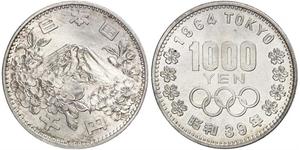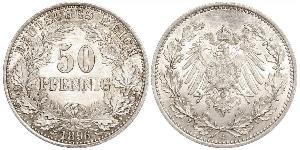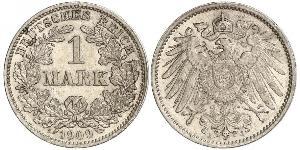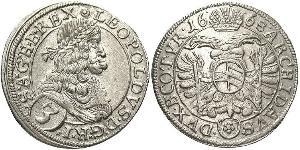(sold for $16.0)
1914, China, Yuan Shih-Kai. Silver 10 Cents (Chiao) Coin. F+
Reference: KM-326.
Mint Date: 1914 (Year 3).
Region: China (Republic).
Denomination: 10 Cents (Chiao)
Condition: Numerous hits (old silver-test marks) in reverse, dark oxidation spots, otherwise F+
Mint Place: Tiensin, Nanking or Wuchang.
Diameter: 18mm
Material: Silver
Weight: 2.58gm
Obverse: Uniformed bust of Yüan Shih-kai left. Six characters above.
Reverse: Chinese characters (denomination) within wreath. Legend of six characters above.
Yuan Shikai (Yüan Shih-k'ai; Courtesy Wèitíng; Pseudonym: Róng'an, also named after birthplace Yuán Xiàngchéng) ( 16 September 1859 – 6 June 1916) was an important Chinese general and politician famous for his influence during the late Qing Dynasty, his role in the events leading up to the abdication of the last Qing Emperor of China, his autocratic rule as the first President of the Republic of China, and his short-lived attempt to revive the Chinese monarchy, with himself as the "Great Emperor of China".
With Yuan's death, China was left without any generally recognized central authority and the army quickly fragmented into forces of combating warlords. For this reason he is usually called the Father of the Warlords.
However, it is not accurate to attribute other characteristics of warlordism as his preference, since in his career as a military reformer he had attempted to create a modern army based on the Japanese model.
Throughout his lifetime, he demonstrated understanding of how staff work, military education, and regular transfers of officer personnel came together to make a modern military organisation. After his return to power in 1911, however, he seemed willing to sacrifice this ideal in his imperial ambitions, and instead ruled by a combination of violence and bribery that destroyed the idealism of the early Republican movement.
Since those who opposed Yuan could do so only from a territorial military base, Yuan's career as president and emperor contributed greatly to China's subsequent political division and also initiated the warlord era that troubled China for the next 10 to 20 years.
In the CCTV Production Towards the Republic, Yuan is portrayed through most of his early years as an able administrator, although a very skilled manipulator of political situations. His self-proclamation of Emperor was seen as largely under the influence of external forces, such as his son, prince Yuan Keding.
Only 1$ shipping for each additional item purchased!

|
Posted by:
anonymous 2016-10-17 |
10 Corona Austria-Hungary (1867-1918) Gold Franz Joseph I (1 ...
group has 11 coins / 9 prices
⇑
3 Kreuzer Austria Silver Leopold I, Holy Roman Emperor (164 ...
group has 10 coins / 7 prices
⇑















-300-150-SKcKbzbiJ5YAAAFGklQOlaMu.jpg)








